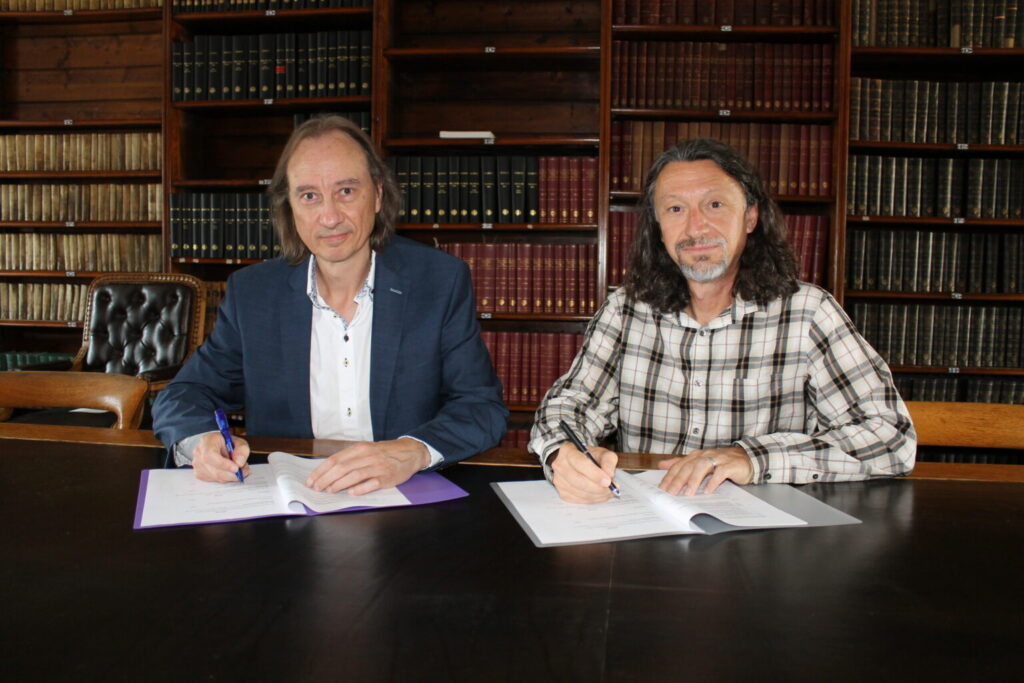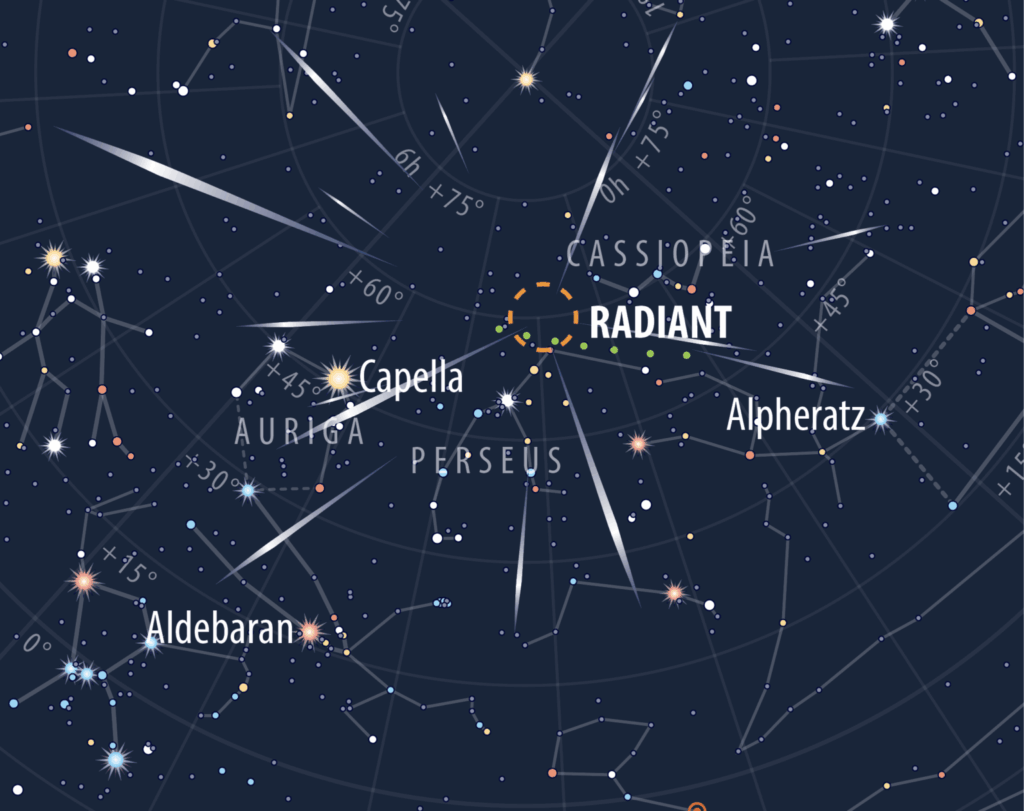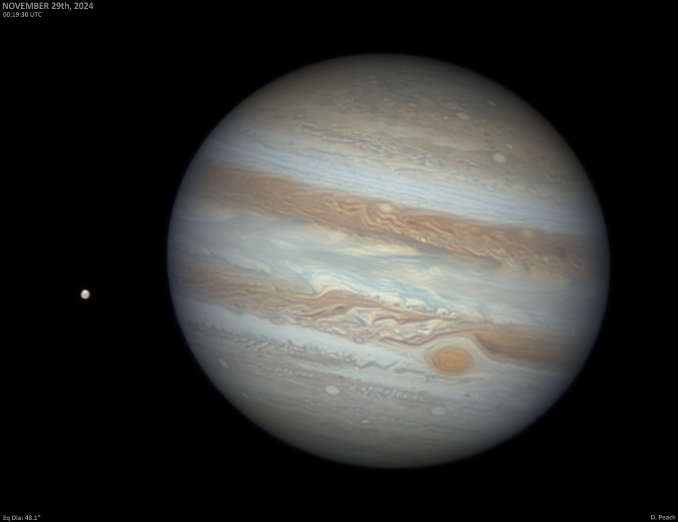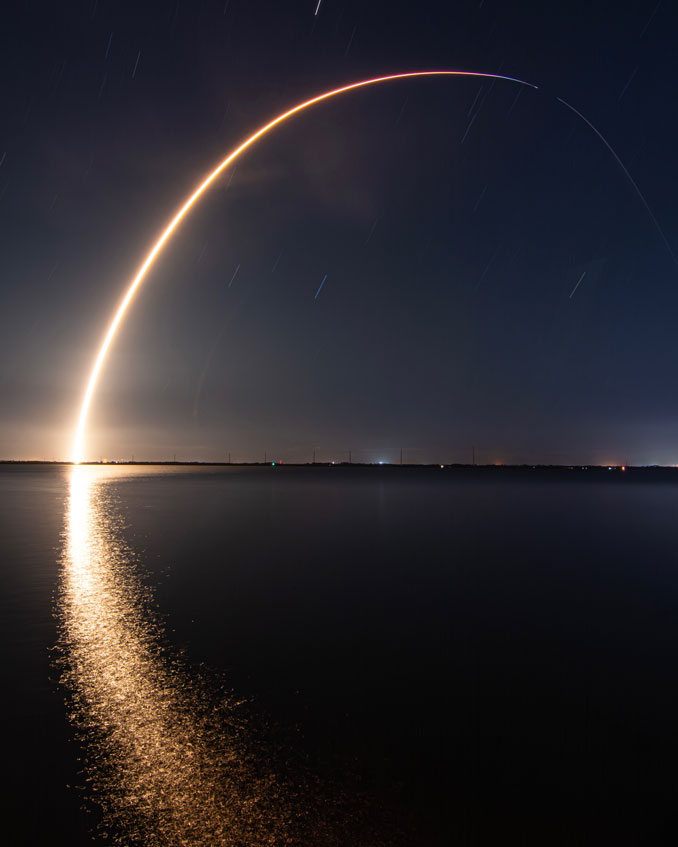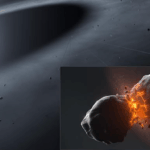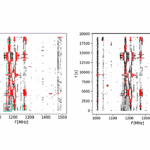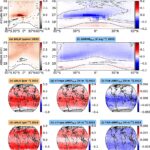Now Reading: Brilliant Jupiter rides high in Taurus
-
01
Brilliant Jupiter rides high in Taurus
Brilliant Jupiter rides high in Taurus
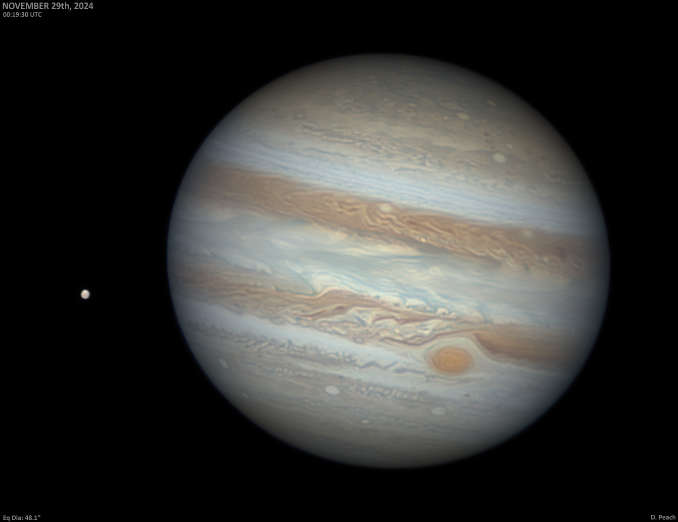

Jupiter reaches its long-awaited opposition on 7 December when it lies in Taurus with a declination of just over 22 degrees, which places it about as high in the northern sky as it ever gets. It’s been 12 years since Jupiter was this well-placed. Jupiter’s next opposition, on 10 January 2026 (there’s no opposition in 2025) in Gemini, is equally favourable.
Jupiter blazes brightly at magnitude –2.8, marking it out as an unmistakable object, outshining by some distance all the stars in the night sky, even scintillating Sirius. Jupiter offers an oblate disc some 48.1 arc seconds across, substantially larger than any other planet, and more than twice the size of Venus this month, the only planet that can appear larger.

On opposition night, Jupiter rises at 3.45pm GMT from London (3.30pm in Scotland), climbs 30 degrees high by 7.15pm (7.30pm) and transits the southern meridian (culminates) at 11.50pm (12.08am), when it lies between 56 and 61 degrees high, appearing lower further northwards in the UK. Night owls will be able to observe Jupiter until at least 4.30am, a more than nine-hour window allowing plenty of time for long imaging runs and for observers to carefully scrutinise Jupiter’s dynamic cloud-tops. By the end of the year Jupiter remains above 30 degrees in elevation from London between 5.30pm to 2.30am.
A binocular view
Grab a pair of 10 x 50 or binoculars and Jupiter will show a small, perceptible disc, which at opposition spans a very impressive 48.1 arc seconds, almost three times larger than Saturn’s globe (not including its rings). You should also notice that Jupiter’s globe bulges outwards owing to Jupiter’s rapid rotation rate, which is about nine hours and 50 minutes at the equator and slightly slower at Jovian latitudes above 15 degrees.
One of Jupiter’s great appeals is its four bright Galilean moons, Io (I), Europa (II), Ganymede (III) and Callisto (IV). Since Galileo Galilei turned his primitive telescope toward Jupiter in January 1610, countless observers have been observing their eternal dance around their parent. All four moons are easy objects to see through a pair of 10 x 50 binoculars as they shine between fifth and sixth magnitude, though Io, which lies closest to Jupiter, is best seen when lying at its furthest east or west of the planet.
Through a telescope
Jupiter doesn’t present a solid surface as a gas giant planet. The surface we see is the outer layer of its atmosphere in the form of major dark belts and bright zones, well-punctuated by among other features, numerous dark and bright spots, or ovals, coming and going on a regular basis. A small telescope of as little as 60mm in aperture, operating at a magnification of 30x, can show Jupiter’s major bright zones and dark belts. Usually, the two equatorial belts, the North and South Equatorial Belts (NEB and SEB) are the most prominent. Jupiter’s speedy rotation period of under 10 hours means virtually the whole of Jupiter’s observable surface is available to observe on a single night this month.

Jupiter’s Great Red Spot (GRS) is its most famous feature, a long-lived anticyclonic storm that has been raging in the planet’s South Tropical Zone (STrZ) for possibly 350 years, but it’s not a permanently fixed feature. Down the decades it has been observed drifting steadily in longitude, though barely in latitude by comparison (Astronomy Now has monthly listings of the GRS’s appearances on the Jovian disc).
The GRS is shrinking. In the late nineteenth-century, it measured more than 40,000 kilometres along its major, east–west axis. In 1995, Hubble Space Telescope images showed the GRS with a diameter of just under 21,000 kilometres. By 2009, it had shrunk to around 18,000 kilometres and today it spans just over 15,000 kilometres. A 150–200mm (six- to eight-inch telescope will give a good view of the GRS at this opposition, though you may get lucky to spot it through a smaller-aperture telescope in good seeing conditions.
Moons shadow play
Turn a telescope on Jupiter and you’ll be able to enjoy some of the exciting and fascinating moon events (phenomena) that take place every day. The moon’s orbital planes coincide with the plane of Jupiter’s equator, which appears edge-on to our line of sight. Thus can they always be found within a narrow band east or west of Jupiter. The first three moons always pass in front of the planet (a transit) or behind it (an occultation). Outermost-lying Callisto, however, is able to pass north tor south of Jupiter’s poles at conjunction when Jupiter is close to the maximum tilt of its axis of 3 degrees to Earth (it’s around 2.6 degrees now).

It’s easy to see, even through binoculars, the moons disappearing or reappearing from behind Jupiter (occultation) or moving in and out of its massive shadow (eclipse), though perhaps the most appealing of all the phenomena is the appearance of the moon’s pitch-black shadows, often accompanied by the moons themselves, traveling across the face of the giant planet (the moons are much harder to see, especially when they cross one of Jupiter’s bright zones). A small- to medium-aperture telescope in the 100–150mm (four-to six-inch) class should be up to the task, though a much larger telescope or an imaging set-up is usually needed to detect the moons themselves.
After conjunction and before opposition, Jupiter’s shadow is cast to the west and shadow transit precedes transit. A fascinating consequence of opposition, with the alignment of the Sun, Earth and Jupiter, is that a moon and its shadow can lie very close together. After opposition Jupiter’s shadow is cast to the east and transits precede shadow transits.
Stay Informed With the Latest & Most Important News
Previous Post
Next Post
-
 01From Polymerization-Enabled Folding and Assembly to Chemical Evolution: Key Processes for Emergence of Functional Polymers in the Origin of Life
01From Polymerization-Enabled Folding and Assembly to Chemical Evolution: Key Processes for Emergence of Functional Polymers in the Origin of Life -
 02Panasonic Leica Summilux DG 15mm f/1.7 ASPH review
02Panasonic Leica Summilux DG 15mm f/1.7 ASPH review -
 03Two Black Holes Observed Circling Each Other for the First Time
03Two Black Holes Observed Circling Each Other for the First Time -
 04How New NASA, India Earth Satellite NISAR Will See Earth
04How New NASA, India Earth Satellite NISAR Will See Earth -
 05And Thus Begins A New Year For Life On Earth
05And Thus Begins A New Year For Life On Earth -
 06Astronomy Activation Ambassadors: A New Era
06Astronomy Activation Ambassadors: A New Era -
07SpaceX launch surge helps set new global launch record in 2024












